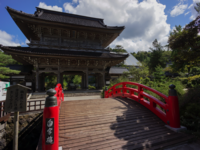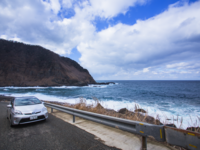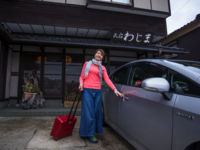 Magaki Village (Ozawa)
Magaki Village (Ozawa)
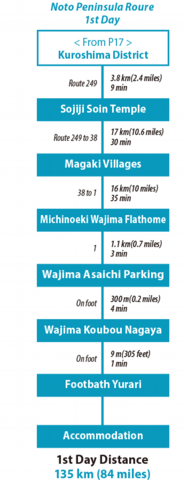
 Sojiji Soin Temple (總持寺祖院), just off Route 249, is another star destination. The temple was founded in 1321 as a head temple of the Soto Buddhist sect. Unfortunately, in 1898, a big fire destroyed many of the buildings, and after that, the head temple function was moved to another Sojiji in Tsurumi, Yokohama. Accordingly, this temple became the Soin (father temple). Even now, monks in the temple continue their austere practices everyday, including countless-hours’ of zazen (sitting meditation). Strolling through dignified buildings and beautiful gardens may make you feel introspective. If you want a total experience, it is a good idea to try zazen yourself. Sojiji Soin Temple welcomes anyone to practice zazen, as long as you make a reservation by phone.
Sojiji Soin Temple (總持寺祖院), just off Route 249, is another star destination. The temple was founded in 1321 as a head temple of the Soto Buddhist sect. Unfortunately, in 1898, a big fire destroyed many of the buildings, and after that, the head temple function was moved to another Sojiji in Tsurumi, Yokohama. Accordingly, this temple became the Soin (father temple). Even now, monks in the temple continue their austere practices everyday, including countless-hours’ of zazen (sitting meditation). Strolling through dignified buildings and beautiful gardens may make you feel introspective. If you want a total experience, it is a good idea to try zazen yourself. Sojiji Soin Temple welcomes anyone to practice zazen, as long as you make a reservation by phone.
Basking in the afterglow of zazen, head for the lively city center of Wajima.
Tear yourself away from the temple and back on to Route 249. Instead of taking the shortest route to the center of Wajima City, take a little detour to Kamiozawa (上大沢) and Ozawa (大沢) via 38. Facing the Sea of Japan, the classic fishing villages of Oku-Noto feature unique landscapes with “magaki”, the region’s traditional tall fence made of bamboo. Magaki is used to protect the house from the strong sea wind, but aside from being functional, it creates a wonderful ambiance.
Relish the approx. 8-kilometer (5-mile) drive along the unspoiled seashore of Ozawa, pausing at the observation deck en route to enjoy panoramic sea views. It’s clearly best in fine weather, but, lowering skies and storm-tossed seas also make for dramatic scenery.
Knock around the unhurried and unassuming city steeped in salty culture.
Let’s assume that you’ve arrived at the center of Wajima early in the evening. The city provides a relaxed atmosphere, as well as plenty to see and do. Visit the Wajima Tourist Information Center at Michinoeki Wajima (道の駅 輪島), park the car at Wajima Asaichi Parking (輪島朝市駐車場), or the inn you’ve booked, and explore the town on foot. Before soaking up the cozy atmosphere of this charming fishing town, soak your feet in the footbath Yurari (湯楽里), to relieve your driving fatigue.
After checking out Wajima Kobo Nagaya (輪島工房長屋) where you can observe the traditional techniques of making Wajimanuri lacquer ware, one of the most ancient lacquer crafts of Japan, visit the old sake breweries of the city. If there is still some time before dusk, go to Wajima Port (輪島港). Crowded with loads of fishing boats, this small port provides fantastic photo opportunities.
For dinner, do try some seafood dishes, especially sushi. When it comes to accommodation, we recommend ryokan or minsyuku. As you know, ryokan is a Japanese-style inn, perfect for travelers who wish to experience traditional Japanese culture and lifestyle such as tatami flooring and futon bedding. There are many ryokan in Wajima, some of which offer elaborate dinner and hot springs with a view of the sea.
Minsyuku is also a Japanese-style inn, but offers considerably fewer amenities than ryokan. For example, rooms may be a part of the owners’ own home, and the guests are expected to make up their own bed. Consequently, prices are lower than ryokan, and in addition, you can get a chance to mingle with the owner family.
Foreigner-Friendly Shop
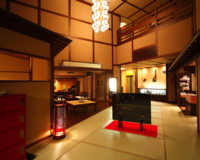
Nebutaonsen Notonosho [ねぶた温泉 能登の庄]
An authentic Japanese ryokan, boasting well-appointed rooms with stunning views of the Sea of Japan, as well as beautiful and comfortable tatami corridors.
![]() Nebutaonsen, Onomachi, Wajima, Ishikawa
Nebutaonsen, Onomachi, Wajima, Ishikawa![]() 0768-22-0213
0768-22-0213![]() http://www.notonosho.co.jp
http://www.notonosho.co.jp![]() Check in 14:00; Check out 11:00
Check in 14:00; Check out 11:00![]() ¥27,000~ Dinner and Breakfast included.
¥27,000~ Dinner and Breakfast included.![]() Accepted
Accepted ![]() Japanese spoken
Japanese spoken ![]() WiFi available in some area.
WiFi available in some area.
![]()

